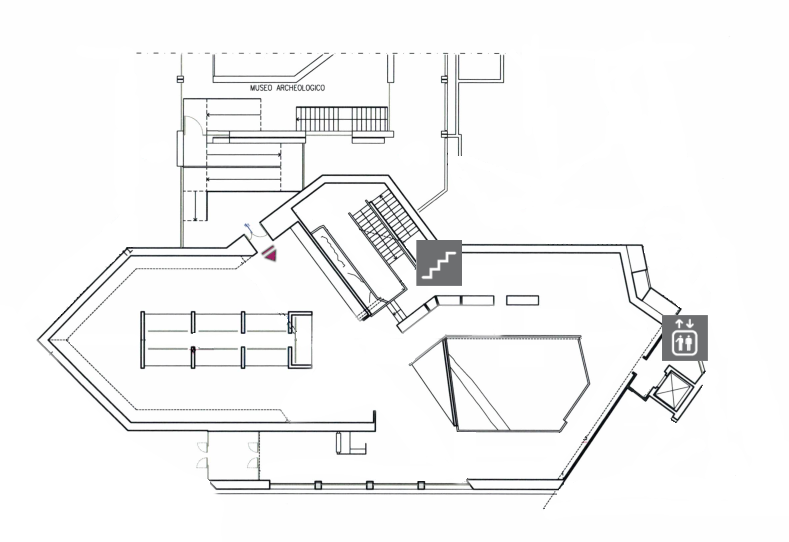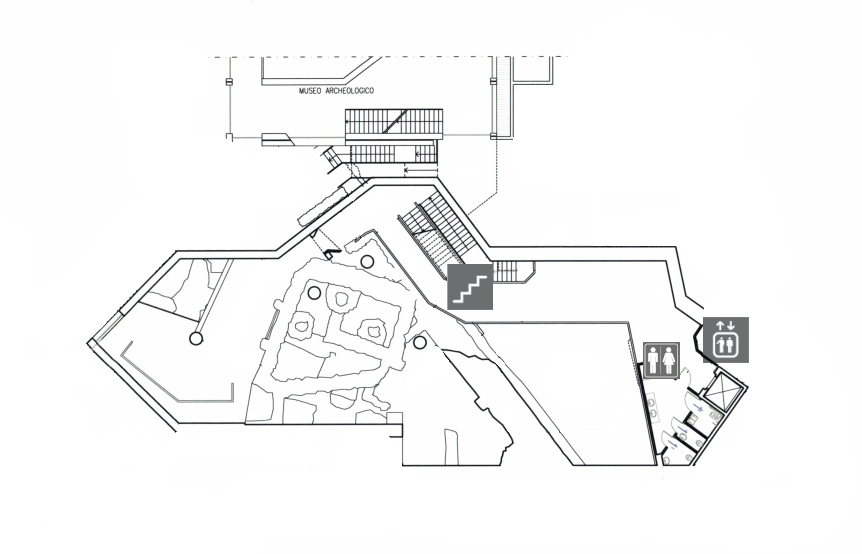Corpo Pagina
The exhibition path of the Art Gallery is spread over three floors, from the top to the bottom.
Access is from the third floor of the Archaeological Museum.
The layout respects and follows the course of the ancient Spanish walls, incorporated into the museum. The presence of an empty space in the centre, now enhanced by the presence of a large painted polyptych, allows a broad view of almost the entire collection, ranging from the early 15th century to the Contemporary.
The presence of the lift makes the entire structure accessible and usable.
First floor

The centrepiece of the exhibition is the retabli, large altarpieces divided into painted compartments, which adorned 15th- and 16th-century churches in Cagliari and southern Sardinia. The exceptional nature of the collection, a true unicum in the Italian national panorama, makes it possible to admire works by Catalan artists – such as Joan Mates, Rafael Thomas and Joan Figuera – and Sardinian artists – such as Cavaros, Antioco Mainas, Francesco Pinna – who had a substantial importance in the history of art in Sardinia.
Other works ranging from the 16th century through the 17th and 18th centuries, from Flemish, Neapolitan, Genoese, Roman, Emilian, Venetian and Spanish schools, are displayed on the walls of the museum, underlining the close dialogue that the island has always kept with other centres on the shores of the Mediterranean and throughout Europe.
The exhibition is enriched by a precious Reliquary of the Holy Martyrs of Sardinia in mahogany with inlays of ebony, ivory, tortoiseshell and brass inserts, dated around 1615-1620, a selection of precious Sardinian jewellery and votive wooden statuettes.
Second floor

The second floor houses works from 19th century, when Sardinia was part of the Kingdom of Sardinia-Piedmont, with an interesting collection of portraits. They include the portrait of Canon Spano, an enlightened figure of 19th-century positivism in Sardinia, fundamental in the history of the island and the National Museums of Cagliari.
The island’s twentieth-century painting is witnessed by painters such as Stanis Dessy, Pietro Antonio Manca, Cesare Cabras, Mario Delitala and Giovanni Ciusa Romagna, and ranges from topics such as rural life, traditional dress, landscapes, portraits and still lifes.
Contemporary artists, some still alive, also find a significant exhibition space in this area: the museum’s aim is to increase the collections with a keen interest in modern-day art.
Lower floor

On the last floor there is a space dedicated to temporary exhibitions.
Currently on display there is the donation made in 2021 by the artist and master goldsmith Italo Antico.
